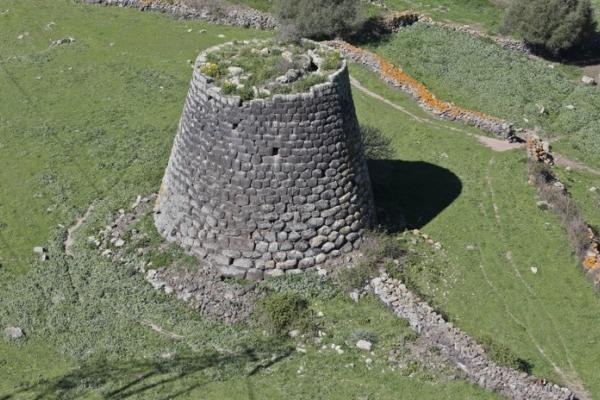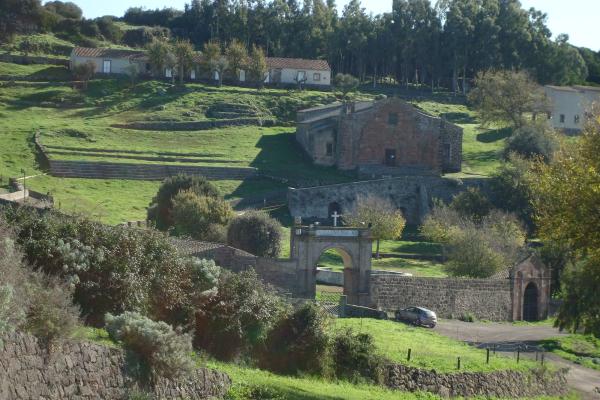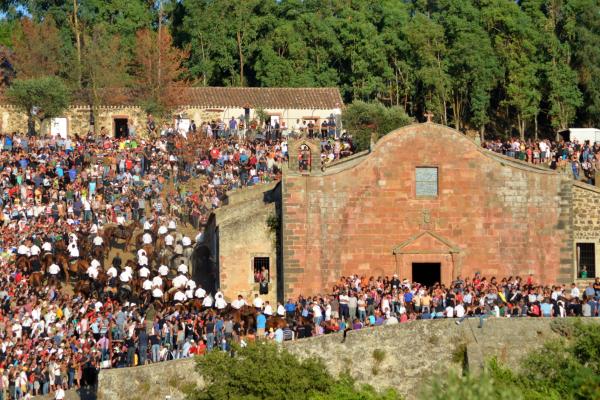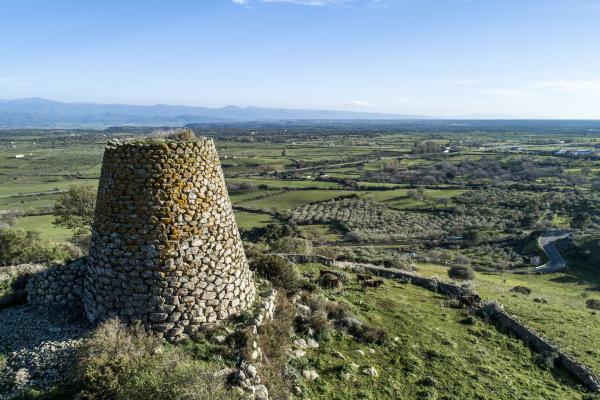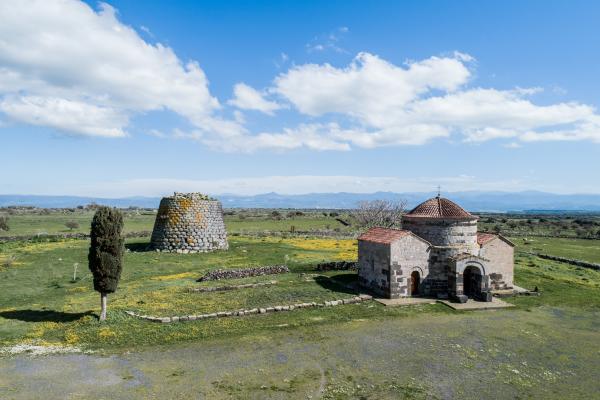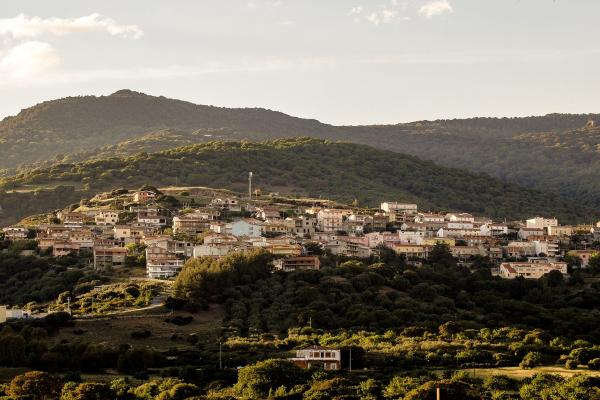Perching 300 metres above sea level on undulating hills, it prevails over the Ottana plain between Lago Omodeo and the Marghine range, dominated by the imposing Gennargentu massif. The Villa di Noragugume has just over 300 inhabitants, dedicated mainly to livestock, forming part of any authentic village in Italy. The name derives from a Nuraghe structure shaped like a cauldron that stood near the centre. The origins of the village are prehistoric, whilst the current town, well-structured and decorated with murals, dates back to the 15th century with the Chiesa di Santa Croce at its heart, consecrated in 1593. In addition to the modern parish of San Giacomo – the patron saint celebrated in late July – two other churches are of considerable importance. On the outskirts is the ancient country church of San Michele and in the central piazza, that of the Beata Vergine d’Itria, with a Gothic-Catalan layout (1623).
Perching 300 metres above sea level on undulating hills, it prevails over the Ottana plain between Lago Omodeo and the Marghine range, dominated by the imposing Gennargentu massif. The Villa di Noragugume has just over 300 inhabitants, dedicated mainly to livestock, forming part of any authentic village in Italy. The name derives from a Nuraghe structure shaped like a cauldron that stood near the centre. The origins of the village are prehistoric, whilst the current town, well-structured and decorated with murals, dates back to the 15th century with the Chiesa di Santa Croce at its heart, consecrated in 1593. In addition to the modern parish of San Giacomo – the patron saint celebrated in late July – two other churches are of considerable importance. On the outskirts is the ancient country church of San Michele and in the central piazza, that of the Beata Vergine d’Itria, with a Gothic-Catalan layout (1623). The feast of Madonna d’Itria on Pentecost Tuesday is the most heartfelt in the town, accompanied by an ardia, a galloping race around the sanctuary, perhaps dating back to when the town was divided into districts and the knights who represented each one would try to conquer the standard of the Virgin. San Giovanni is at the end of June, whilst at the end of October there is s’Izzadorzu, celebrations accompanied by folklore events, poetic competitions in the Logudorese dialect and tastings of recipes from the pastoral tradition. Stewed and roast lamb are the protagonists, paired with potatoes, peas and wild fennel. The entrails of lamb or goat are prepared in dishes called cordula and trattalia. There is a wide variety of bread, from the types enjoyed on a daily basis such as su bistoccu, to those more elaborated prepared for special occasions. Each festival is accompanied by specific desserts: frisciolas, pasta violada and culinzones de mendula for carnival, casadinas with cheese and tiliccas (sapa liqueur, almonds and honey) at Easter, pabassinos (almonds, walnuts and raisins) and santos de tuccaru for All Saints.
The territory of Noragugume has been populated since Neolithic times, as is shown by the Domus de Janas of Taleri and Iscannitzu and the menhir Sa Pedra ’e Taleri, of the proto-anthropomorphic type, dating back to 3300-2500 BC, which arises isolated and imposing (four and a half metres high) in a flat area. Indeed, there are numerous Nuraghe structures, including the Irididdo with a central tower and two lateral ones, the Muresune and Litzera. The most famous is the Tolinu nuraghe, in a dominant position on a plateau two kilometres from the town. The structure, dating back to the Middle Bronze Age and remodelled in successive periods, was used through to the historical age, being complex with a well-preserved bastion and central tower. Around this, the residential settlement can be seen.










